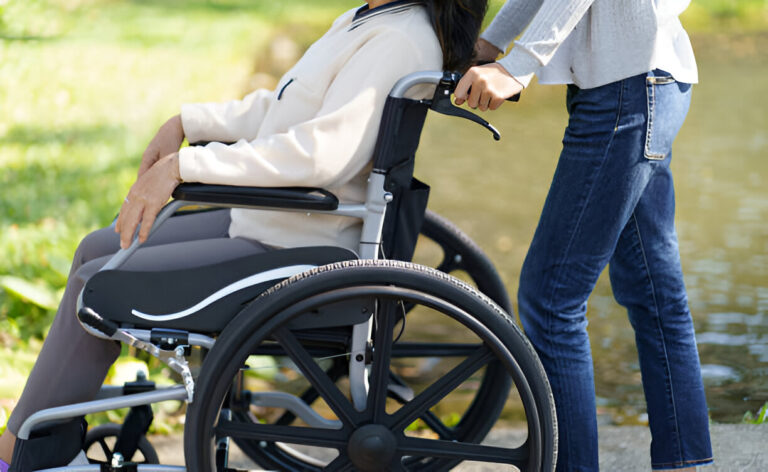Table of Contents
- Introduction to Wheelchair Positioning
- Understanding the Basics of Ergonomics
- Common Wheelchair Positioning Challenges
- Health Benefits of Proper Positioning
- Tips for Optimal Positioning
- Technologies Enhancing Wheelchair Comfort
- Conclusion
Introduction to Wheelchair Positioning
Wheelchair posture is essential to ensure the comfort and well-being of those who depend on wheelchairs for movement. Properly distributing body weight lowers the chance of pressure sores and other issues. It also promotes better posture, making daily activities more manageable and less physically taxing. By adjusting seat depth, backrest angle, and footrest placement, users can experience improved comfort and prevent unnecessary strain on the body.
Optimizing wheelchair positioning is vital for enhancing overall well-being, particularly preventing musculoskeletal issues and improving circulation. Positioning wheelchairs with thoughtful adjustments can contribute to a more natural alignment, which minimizes discomfort and fatigue. In addition to comfort, these adjustments can promote better respiratory and digestive function, allowing individuals to lead a more active and healthy lifestyle.
Understanding the Basics of Ergonomics
Embedding ergonomics into wheelchair design involves organizing systems to accommodate the natural form and activities of the human body. Ergonomics in wheelchairs is more than just user-friendly design; it’s about ensuring optimal health. High-quality ergonomic design helps form a foundation for minimizing spinal strain, reducing muscular fatigue, and promoting healthier body mechanics. By adhering to ergonomics principles, manufacturers can design wheelchairs that enable users to maintain natural, sustainable postures over extended periods, thereby minimizing the risks of disability-related musculoskeletal issues.
Common Wheelchair Positioning Challenges
Positioning mishaps can arise from various factors, such as inaccurate adjustments or unsuitable seating equipment. Common positioning challenges include the development of pressure sores due to unrelieved pressure on the skin and improper alignment, which can lead to lifelong complications. Posture-related issues like spinal curvatures or shoulder pain frequently result from poor seating choices. Thus, understanding and mitigating these challenges is essential for improving user well-being and minimizing discomfort over time.
Health Benefits of Proper Positioning
Proper wheelchair positioning has expansive, holistic benefits. Ensuring adequate seating can enhance circulation, limit the potential for pressure sores, and aid tissue health. Patients with scoliosis, kyphosis, or other musculoskeletal disorders can experience improved alignment and reduced discomfort through strategic positioning. Furthermore, correct posture ensures that the diaphragm is unrestricted, promoting more profound, more efficient breathing and enhancing overall lung capacity. In essence, optimal positioning can be a transformative factor, boosting individual autonomy and promoting healthier daily routines.
Tips for Optimal Positioning
The secret to attaining maximum comfort is through accurate personalization and evaluation. Consult with experts who can offer customized solutions based on a person’s body and health requirements. Suggested tips include ensuring both feet rest flat on the footrest to maintain balance, aligning the backrest with the spine’s natural curve to prevent slouching, and placing armrests at an angle conducive to shoulder relaxation. In conjunction with these adjustments, regular repositioning is a preventative measure against pressure sores, ensuring sustained comfort and ease.
Technologies Enhancing Wheelchair Comfort
The landscape of wheelchair technology is continually evolving, bringing groundbreaking advancements that redefine user comfort. Modern wheelchairs boast sophisticated features such as adjustable seat widths, enhanced cushioning gels, and automated height adjustments. Emerging technologies now include smart apps that allow users to control their seating preferences, tailoring every aspect from tilt-in-space to recline angles.
Conclusion
Ultimately, the importance of wheelchair positioning in improving quality of life cannot be overstated. Through integrating ergonomic science, embracing technological advancements, and tailoring solutions to unique user needs, wheelchair users can aspire for improved health outcomes and greater autonomy. The road to optimal comfort and health requires ongoing education and adaptive strategies, embracing continual enhancements in design and support to ensure every user thrives.

